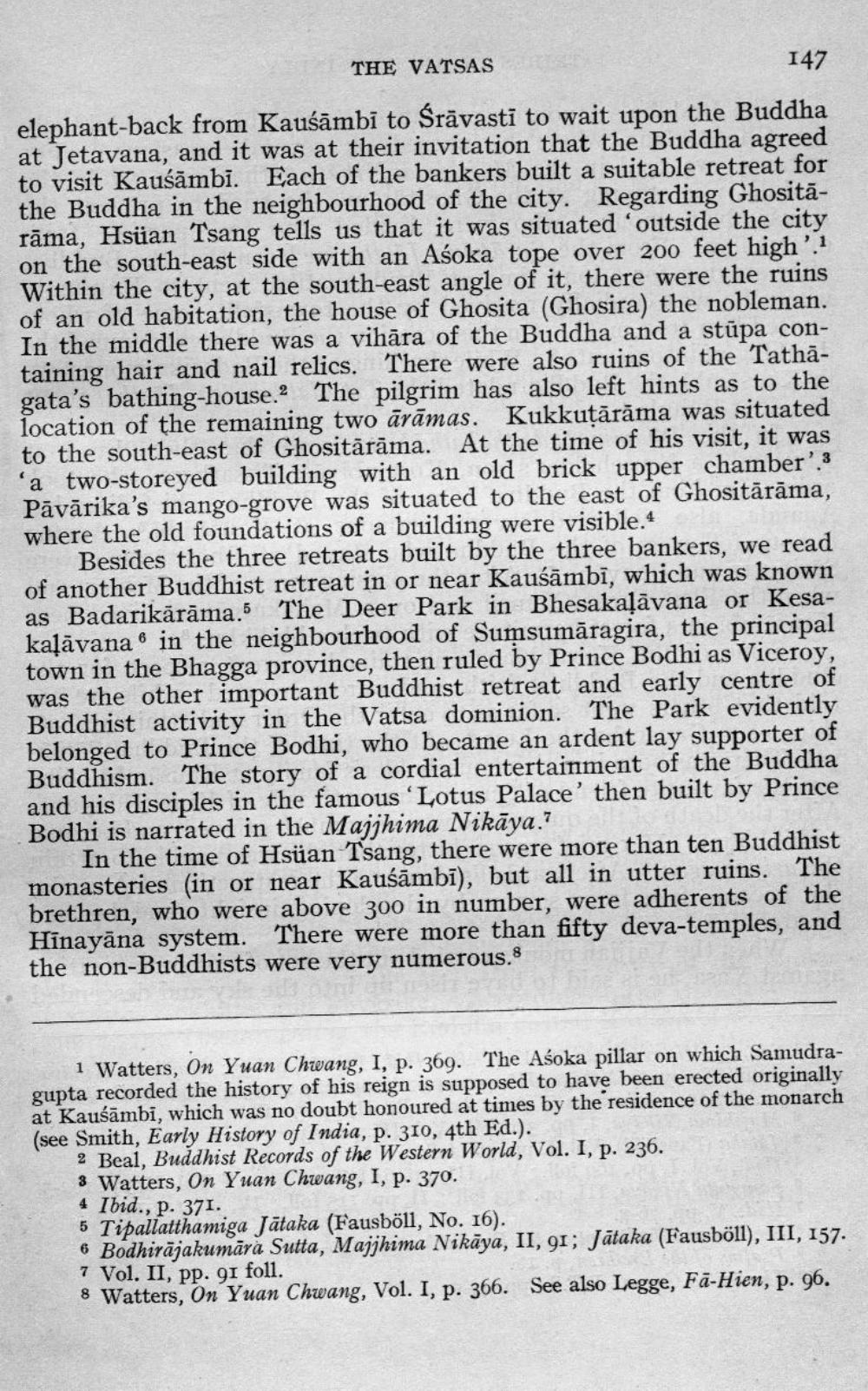________________
THE VATSAS
147 elephant-back from Kaušāmbī to Śrāvasti to wait upon the Buddha at Jetavana, and it was at their invitation that the Buddha agreed to visit Kaušāmbi. Each of the bankers built a suitable retreat for the Buddha in the neighbourhood of the city. Regarding Ghositărāma, Hsüan Tsang tells us that it was situated outside the city on the south-east side with an Aśoka tope over 200 feet high '.1 Within the city, at the south-east angle of it, there were the ruins of an old habitation, the house of Ghosita (Ghosira) the nobleman. In the middle there was a vihāra of the Buddha and a stūpa containing hair and nail relics. There were also ruins of the Tathāgata's bathing-house. The pilgrim has also left hints as to the location of the remaining two ārāmas. Kukkutārāma was situated to the south-east of Ghositārāma. At the time of his visit, it was 'a two-storeyed building with an old brick upper chamber'.3 Pāvārika's mango-grove was situated to the east of Ghositārāma, where the old foundations of a building were visible.4
Besides the three retreats built by the three bankers, we read of another Buddhist retreat in or near Kausāmbi, which was known as Badarikārāma. The Deer Park in Bhesakaļāvana or Kesakaļāvana in the neighbourhood of Sumsumāragira, the principal town in the Bhagga province, then ruled by Prince Bodhi as Viceroy was the other important Buddhist retreat and early centre of Buddhist activity in the Vatsa dominion. The Park evidently belonged to Prince Bodhi, who became an ardent lay supporter of Buddhism. The story of a cordial entertainment of the Buddha and his disciples in the famous 'Lotus Palace' then built by Prince Bodhi is narrated in the Majjhima Nikāya.?
In the time of Hsüan Tsang, there were more than ten Buddhist monasteries in or near Kausāmbī), but all in utter ruins. The brethren, who were above 300 in number, were adherents of the Hinayāna system. There were more than fifty deva-temples, and the non-Buddhists were very numerous. 8
1 Watters, On Yuan Chwang, I, p. 369. The Aśoka pillar on which Samudragupta recorded the history of his reign is supposed to have been erected originally at Kaušāmbi, which was no doubt honoured at times by the residence of the monarch (see Smith, Early History of India, p. 310, 4th Ed.).
2 Beal, Buddhist Records of the Western World, Vol. I, p. 236. 3 Watters, On Yuan Chwang, I, p. 370. 4 Ibid., p. 371. 5 Tipallatthamiga Jataka (Fausböll, No. 16). 6 Bodhirājakumāra Sutta, Majjhima Nikāya, II, 91; Jātaka (Fausböll), III, 157. 7 Vol. II, pp. 91 foll. 8 Watters, On Yuan Chwang, Vol. I, p. 366. See also Legge, Fā-Hien, p. 96.




